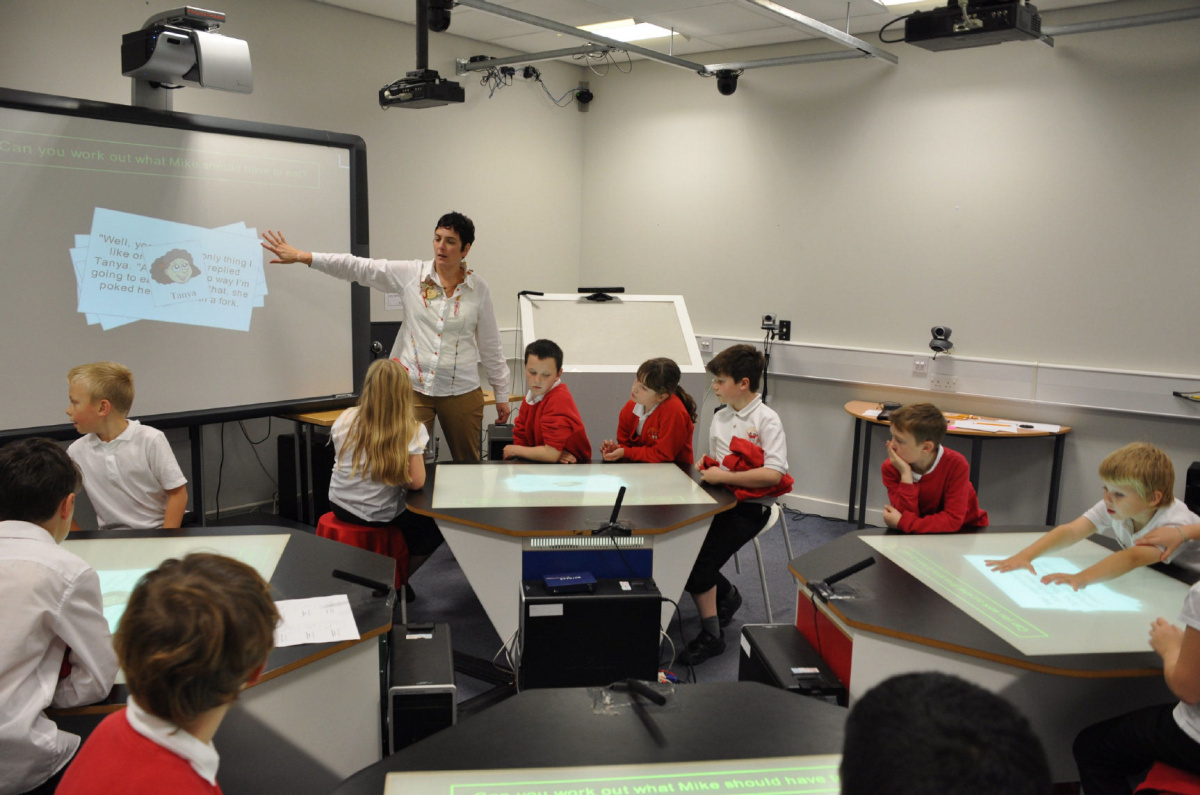Some weeks ago I had the pleasure to have lunch with Alan November. What a wealth of ideas and inspiration he is. The reason I was having lunch with him was that our Director of Learning had organised his visit as he was on his way to the American school in Singapore then on to several destinations as he was heading Eastward.
Deliberately sitting opposite him, I wanted to know more about his processes in finding out best methods for troubleshooting and developing a learning community. What gets it off the ground? What makes it independent? And ultimately, what makes it to become autonomous? How can we initialise an ethos of change? These are all questions I'll be addressing as this project unfolds.
The reason I was doing this was because I have designed this room that is, let’s say it has the right intentions, the right impetus but not quite the right direction. Let’s call this the Apple Watch of our school. Version 1 and 2 were ok, could do a job but for all intents and purposes were also-rans. This was coupled with there being too many cooks who needed or wanted to add their secret recipe of 12 herbs and spices to mix and there was too much Cayenne and not enough balance. This, coupled with the fact there was no set figure for a budget meant that everything was being done piecemeal: we have kit that either works, is flakey, expensive and not suitable for the learning to take place smoothly. It’s frustrating. It needed a kick up the arse.
So here were are: I’m sat opposite a booming erudite intellectual trying in vain to get as much information out of him as possible in the hope that I’d get a ‘Eureka’ moment. And to my surprise I did. It’s been a while since the Edtech mojo has been alive within me but here it is in it’s full glory. That room needs learning first and the teachers and children need channels in which to publish on, all the while using tech that is current and forward thinking but not so much it scares away the average classroom teacher.
Alan was talking about giving students the avenues in which to publish learning with the aides video. This is what my good edtech friends Ian Stewart and Ian Pittman call ‘dirty filming’. Get the children recording with any camera that’s available - anything that they are learning about and get them publishing it. Its’ that simple. Film it. Share it. Then, get an audience to view it. That last bit is the hard bit in our school. Because, you know, that known lone voice from the Tech Dept. is always the maddest: “beware the edtech guy is advocating a slight change to routine - run for hills!” Just get your kids enthused about talking online with a level-headed approach and all will be fine. All WILL be fine and the content will evolve. The stumbling block is what I hear all too often: “Oh, the kids just make any old stuff and it’s not vey good.” Yeah? Give them a go and see what happens, you may be surprised by the outcome and how it actually evolves.
So, Alan, being a different voice, saying something very similar to what we in my department talk about relentlessly, is suggesting getting streams [channels] of learning published. The difference is that, while Alan’s examples were compelling, the viewership for the age of the videos was low in my opinion (90,000 in the most viewed episode). And, they happened to be on low-level aging platforms (old Wordpress). While this is minor, it does make me think why they weren’t on YouTube if commentary and viewership is the key goal. Anyway, the examples were fine; I’d prefer to hit the biggest community if numbers and feedback was my aim. And, this is one aspect of the set of goals I have. Feedback and a kind of calculus approach to the betterment of the ‘dirty films’.
4K
However, he made his point sit well with the majority of us and helped move this idea forward. Now, the thing that made me sit up and listen to Alan even more was the idea of refining that process of ‘dirty filming’ the two Ians talk about: Refining parts such as Audio. Audio is a big deal in today’s market. It’s all well and good getting a product out there although, if your project doesn’t get any better or more refined over time, not only in content, but in actual technical quality then you’re going to be losing out both in terms of viewership and visual/ aural appeal. The other aspect is the actual quality of the resolution given the cameras at our disposal and the screens we’re viewing them on. ‘Dirty filming’ is OK but I want to up the game on this as a secondary goal. We’re still on VGA in a vast number of classrooms in my school and this isn’t good enough in a non-profit international school to be frank. Moreover, I don’t think this has dawned on many teachers either. It’s kind of ‘well, that’s how it’s always been’ mindset and I’d like to leapfrog the HD element and just go UHD/ 4K in this new room to demonstrate the current levels of affordable display. The devices we own as a 1:1 device are close enough to 4K (iPad Pros), can run 4K HDR content (albeit downsampled but higher than 1080p) will cast higher than 1080p, Apple TV will stream 4K plus the new interactive whiteboards are all going 4K too. So this makes sense to let the Teachers see this for themselves and push the need for clearer text and objects to be seen at the back of the classroom. In every classroom.
A Producer’s Progress















